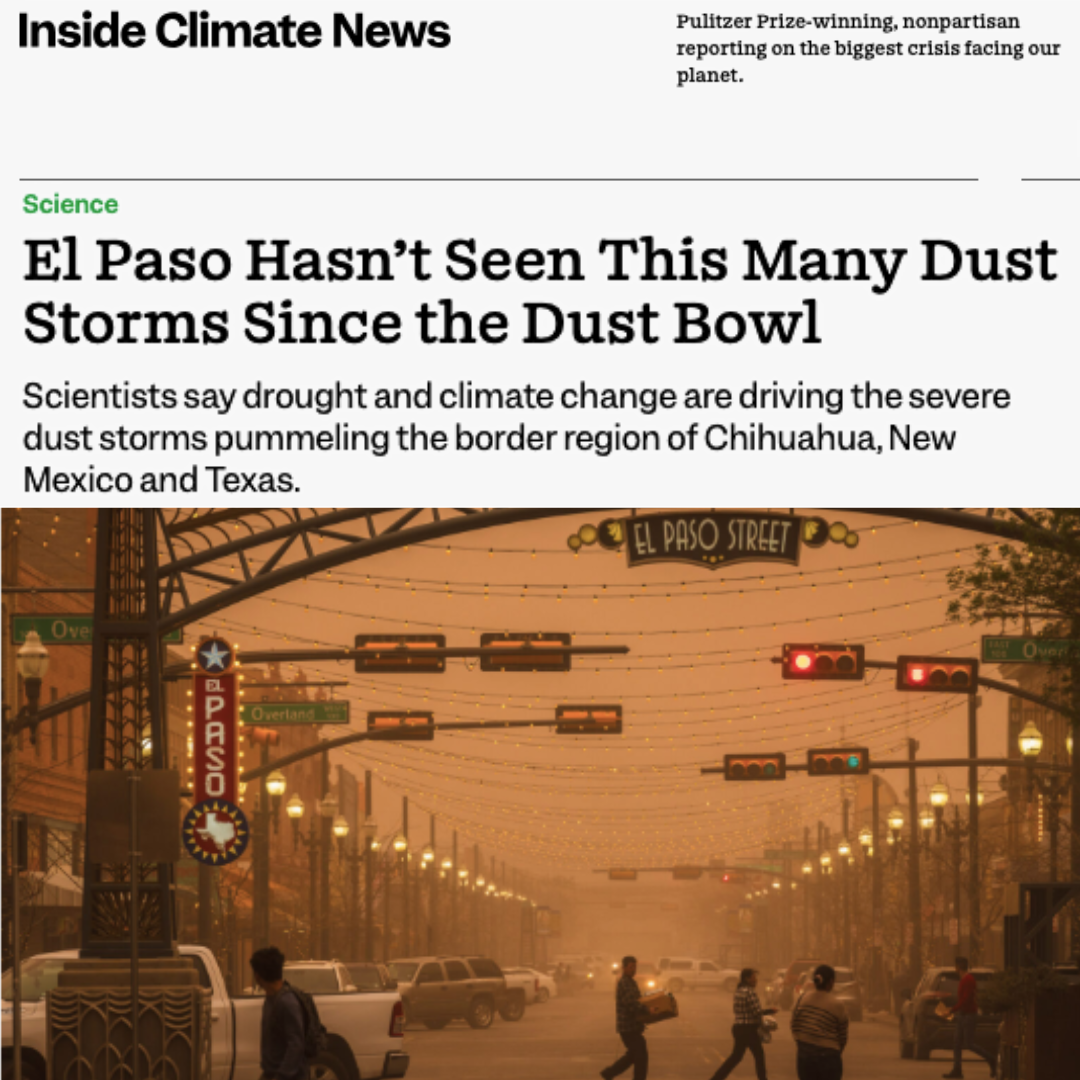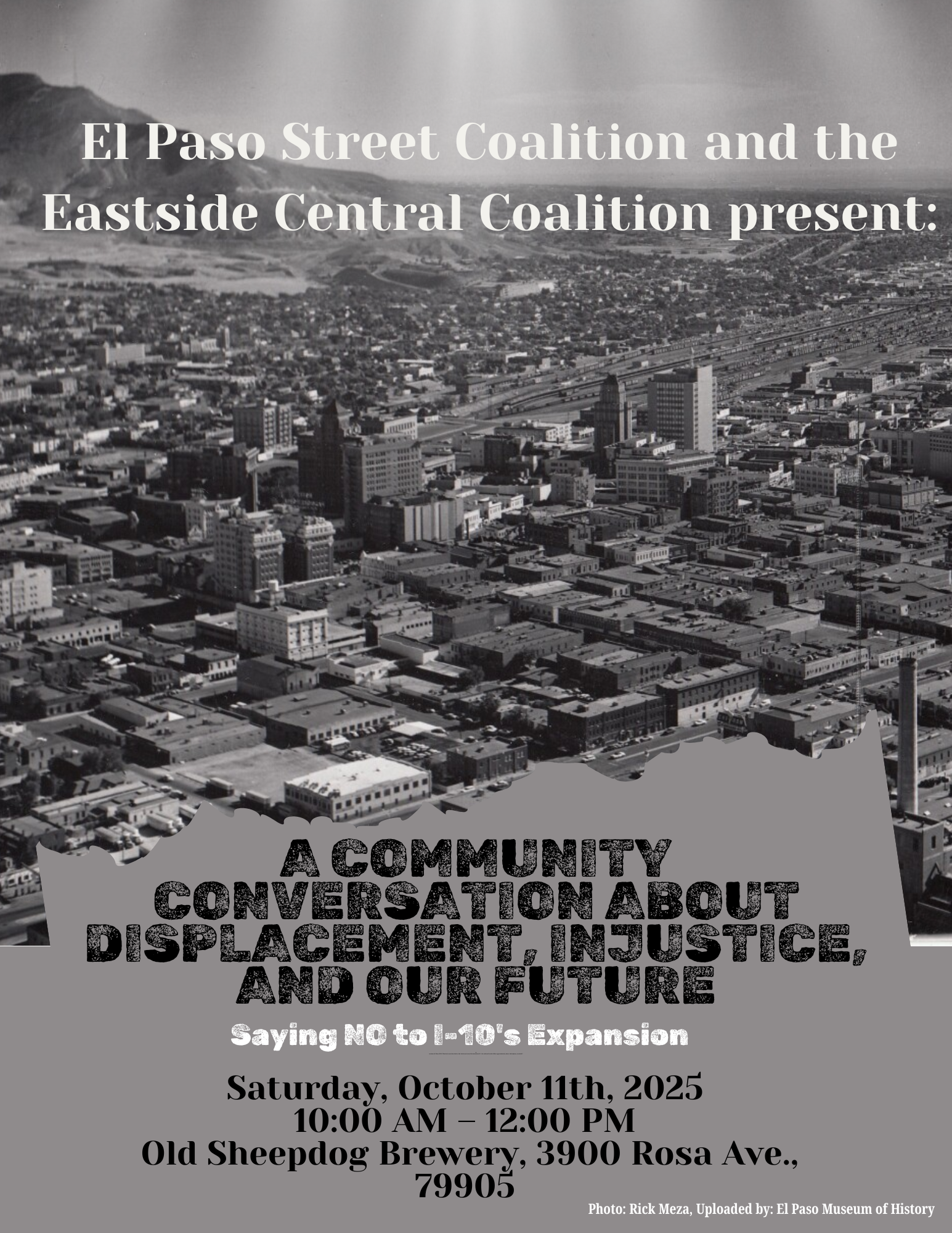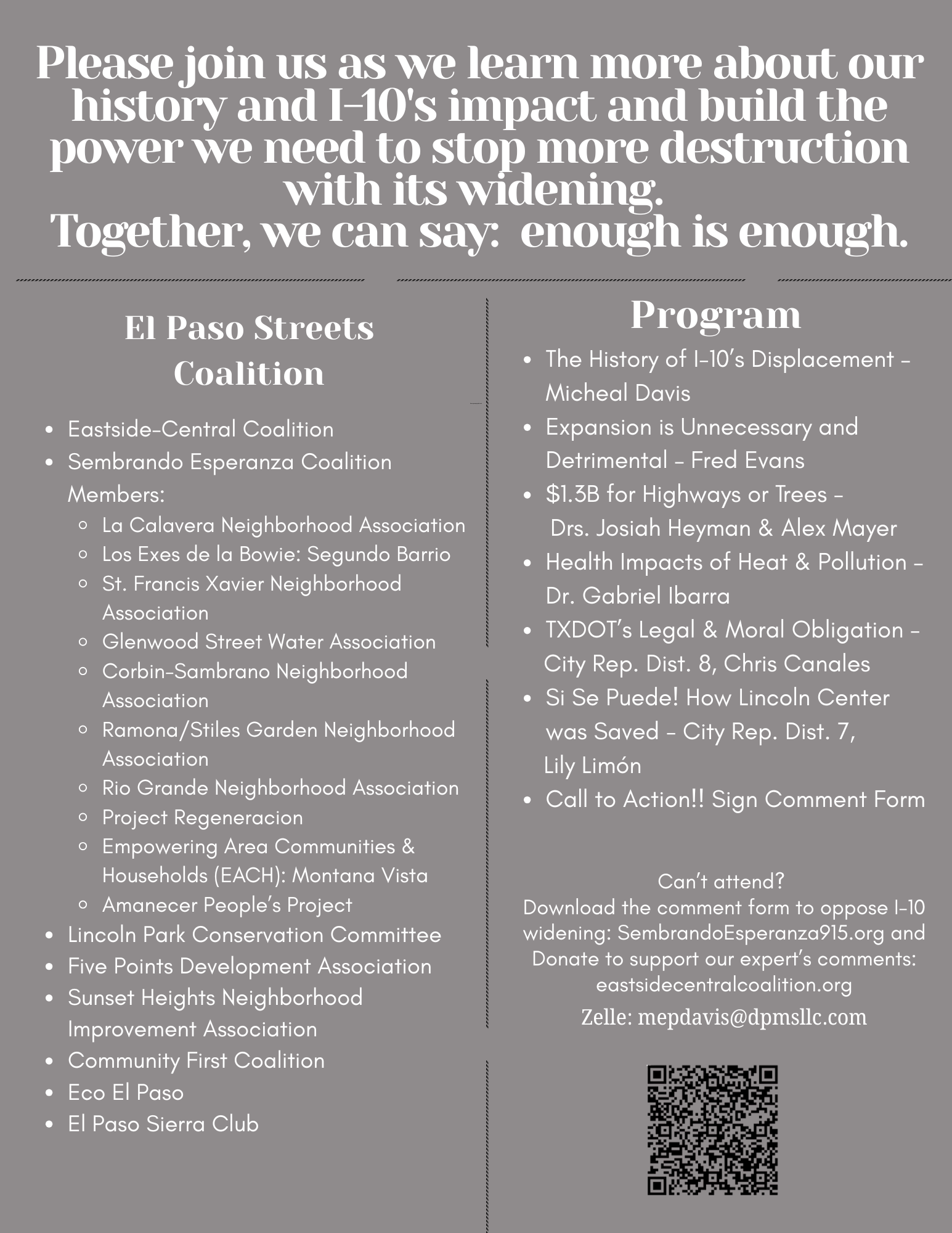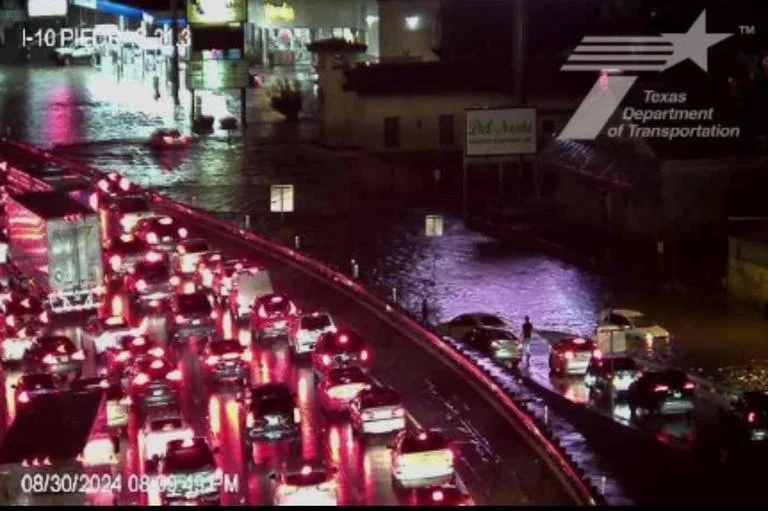
The Texas Department of Transportation (TxDOT) is pushing forward with a massive project to widen I-10 from Executive Center to Copia Street.
They claim it will fix the issue of traffic congestion, but decades of evidence show that adding more lanes doesn't work; in fact, it creates more traffic, more pollution, more flooding, and more sprawl without solving congestion.
1. This project will displace families, businesses, and community landmarks, destroying parts of neighborhoods along the freeway.
2. It will increase air pollution, greenhouse gas emissions, heat, and flooding.
3. It will divert billions of taxpayer dollars away from sustainable alternatives like public transit, pedestrian safety, and neighborhood projects like trees, irrigation canals, and weatherization.
Say NO to adding more lanes to I-10 and YES to fixing I-10 instead.
Micheal E. P. Davis, founder and chairman of the Board of Eastside-Central Coalition, addresses the media during a press conference on the opposition to the expansion of I-10 in El Paso, Texas, 2025.
The Eastside Central Coalition is leading the efforts of the El Paso Streets Coalition and many El Paso community groups who oppose adding more lanes to I-10 (widening or expanding).
Sembrando Esperanza Coalition members (neighborhood-based organizations) do NOT want the Texas Department of Transportation (TXDOT) to spend $1.3 billion of our state dollars to add more lanes to I-10 from Copia Street to Executive Center Boulevard.
The construction of the downtown area alone will cost half a billion dollars.
In addition, the Paso del Norte Community Foundation (PDNCF)/Paso del Norte Health Foundation (PDNHF) is fundraising with both public and private money for the $412 million deck park (aka “deck plaza”) that will go over the freeway in the downtown area. The City is considering contributing $35 million. The County has contributed $1 million. The state delegation (State Senator Blanco and the state reps)gave $10 million, and PDNCF has asked TXDOT for another $10 million. U.S. Congresswoman Veronica Escobar (Dist. 16) has also requested $5 million of federal funding for the deck park.
So far, none of these entities have offered any money for environmental projects in the Sembrando Esperanza Coalition neighborhoods, which were among the neighborhoods that were impacted by I-10’s displacement of thousands of Black and Brown families and vibrant businesses in the 1950s and 60s.
Today, the neighborhoods closest to I-10, including Sembrando Esperanza neighborhoods, face some of the worst levels of pollution, heat, dust and flood risk. Widening I-10 will only worsen these injustices.
🗓️ Join us at our community forum to learn more about the impact of I-10 on your health & environment and submit your comment to TxDOT before the Oct. 14th deadline.
📌 When: Saturday, October 11th, 2025, from 10:00 a.m. to 12:00 p.m.
📍 Where: Old Sheepdog Brewery, 3900 Rosa Ave., El Paso, TX 79905
📣 Speak up against the widening of I-10!
Ask TXDOT to choose the “No Build” option, which means they will not add more lanes and will instead improve the highway, including addressing flooding.
All the lanes of the I-10 at Piedras going westbound flooded on August 30, 2024, in El Paso, Texas. Source: Texas Department of Public Transportation
Map of the location where the Borderland Expressway will be built in El Paso, Texas. Source: Texas Department of Public Transportation
Ask TXDOT to focus on completing the Borderland Expressway (Northeast Bypass) instead of I-10 Downtown. In TXDOT’s own words, "The proposed Borderland Expressway would complete a route around the northeast side of El Paso suitable for truck and other through traffic, diverting traffic from the city center." The Borderland Expressway will relocate semis from I-10, meaning there will be even less congestion than there is now and even less need to add lanes to I-10.
The public transportation system in El Paso could be improved and expanded to accommodate the needs of the community and reduce pollution. Credit: KFOX 14
Ask TXDOT to invest in intentional and effective public transportation, especially for the largest employers and traffic magnets, like UTEP, EPCC, EPISD, SISD, YISD, Fort Bliss, El Paso Electric, and others. Nearly 30 years ago, TXDOT promised to help us get clean air by removing cars from the highways through public transportation.
Instead, it keeps building highways, attracting more cars and semis, benefiting only the fossil fuel industry (gasoline and diesel producers) and contractors who get these projects.
Photograph of Downtown El Paso in 1959, before the land was cleared for Interstate 10. Source: Rick Meza, El Paso Museum of History

























